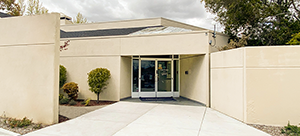When you or your loved ones are faced with deciding between senior care options, chances are cost is at the top of your list regarding things you need to consider. With the average cost of assisted living going up every year, it’s also an important conversation to have with your loved ones.
The cost of senior living may seem overwhelming at first. However, when you break down your living expenses while living on your own, you’ll see that senior living is actually a lot more affordable than people think.
How Much Does Assisted Living Cost?
First, let’s define what Assisted Living is: Assisted living is a step between independent senior living and a skilled nursing facility.
Comprised of small apartments in a care community, assisted living generally allows privacy when it comes to living quarters yet still offers a communal dining area for meals and socializing. Assisted living is for those who are mostly independent but may require a little assistance in medication management, bathing, and other care activities that have become more difficult with age.
According to AssistedLiving.org, the average cost of senior living depends on various factors such as the state, region and location of the community. However, the monthly average cost ranges from $3,500 to $10,500 a month.
Is the Assisted Living Cost Worth It?
Looking at the cost of senior living communities may stress out even the calmest of individuals. Seeing the number in black and white may inspire you or your family to immediately think there’s no way you can afford that. However, if you look at what that number includes, you might be wrong.
Between the ever-increasing cost of living, housing market fluctuations, and the rising cost of healthcare, senior living’s average cost has also been steadily climbing. Expenses you will experience when living independently include rent, food, medication, transportation costs, and typical utilities such as gas and electricity.
Your monthly payment for assisted living typically includes all of these utilities as well as transportation to appointments, cable and WiFi, three nutritious meals a day, and around-the-clock access to skilled medical personnel for emergencies. When breaking down independent living expenses along with extras such as occasional skilled nursing visits, you may find that living in an assisted living community is actually saving you money.
Where to Begin
When looking at your options regarding assisted living, taking it step-by-step is the best piece of advice. It can feel like an overwhelming process, but it’s manageable and worth the time when you break it down. To begin the process of looking into assisted living:
- Do Your Research
Don’t settle on the first place you hear of. Make sure to call and visit communities you are interested in to not only compare facilities but compare prices as well.
- Ask About Incentives
Many facilities offer incentives to attract residents. When you are touring a community, ask the representative if there is a possibility of negotiating the monthly price, whether there’s a move-in incentive available, or if there’s an entrance fee that can be waived.
- Explore Your Financing Options
You may find you have options for financing besides just out of pocket. Explore options such as:
- Veterans Benefits
- Bridge loans
- Reverse mortgages
- Life insurance
Finally, when it comes to deciding whether or not you want to invest in senior living, you should look at the quality of life you will have there versus your quality of life living on your own. You may find the physical and emotional benefits you will reap from senior living make the investment worth every penny.
To learn about the cost of living at an Elder Care Alliance senior living community, contact our team.




















